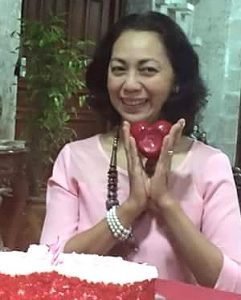If one is from the Philippines, or if one loves art, a trip to Ubud is not complete without a visit to The Blanco Renaissance Museum. Nestled at the Campuhan valley along Jalan Campuhan, the museum is the studio of Manila-born Catalan artist Don Antonio Blanco. Blanco is also known


The museum is a famous landmark in Ubud, hence, it is not difficult to ask around and find it. Sturdy legs are needed to to get there, but taxis are a-plenty and can spare you the steep winding climb to the museum complex and main building. Built on two hectares of hilly land that was given as a gift by the King of Ubud Tjokorda Gde Agung Sukawati in gratitude to Blanco’s enthusiastic promotion of Bali to the rest of the world through his art, the museum is a magnificent collection of the works of Antonio Blanco who settled in Bali in 1952 after falling in love with its culture. He even loved one of its women, a famous Balinese dancer named Ni Ronji whom he married and begot 4 children.

Don Antonio Blanco was born in Ermita in 1911 and was educated in Manila until his high school years after which he moved to New York to study at the National Academy of Art. Obviously, he had a fascination with the female form and Bali became the perfect inspiration for his art.
Don Antonio Blanco’s travels brought him around some parts of the world picking up more artistic inspiration. This man of the world was also proficient at Spanish, French, English, Tagalog, Indonesian and Balinese.

It is unfortunate and frustrating for a visitor to be guided around the three-level museum building and not allowed to use a camera. But rules are rules so I had to make do with savoring each fascinating painting and marvel at their equally fascinating and flamboyant frames which are works of art by themselves. All of these reflected the flamboyance of the late artist Don Antonio who lived in this paradise-like enclave. Our female museum guide gave us an enjoyable and informative tour around the museum with the grace of a typical Balinese. She was graceful even in front of those erotic paintings.

A chance meeting with Antonio’s son Mario, also a well-known painter in Bali, made up for my frustration and was the highlight of our visit. In fact, Mario himself guided us around the last part of the tour. He resembles his father uncannily with his Spanish lineage which is softened by the Asian heritage of his mother.

The IDR100000 entrance fee will take you around the main building, Mario Blanco’s Gallery, the Visitor Living Room, the restaurant, and the garden where exotic birds add color to a visit. It is so much fun to have these tame uncaged birds perch on your arm (with the supervision of the museum guide). By the time you leave the main building, take all the pictures that you want.


End the tour at the small bar at the far end of the garden where an herbal infusion is served you to cool down the heat caused not only by the humid climate of
Other facts:
* The museum opened in

